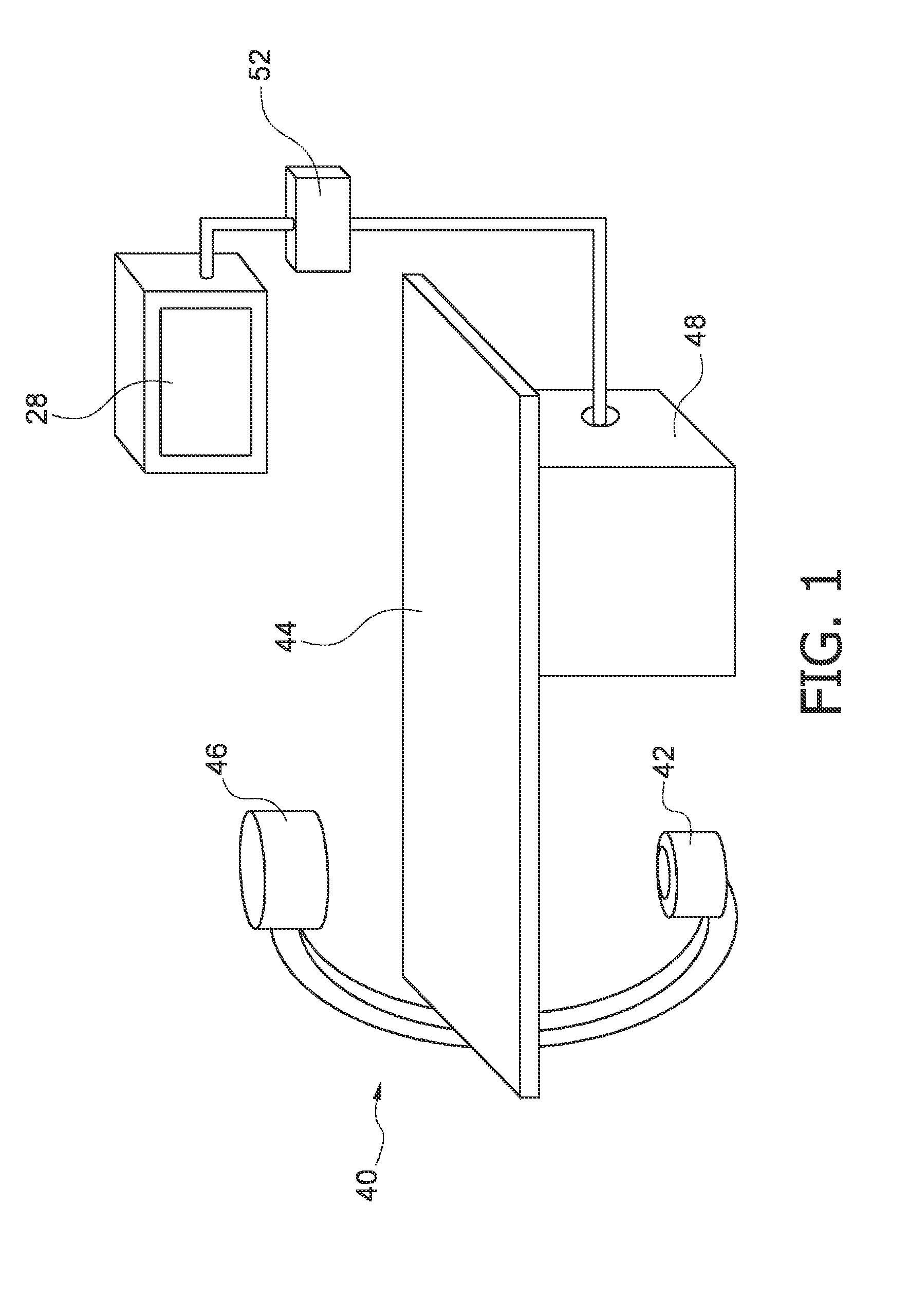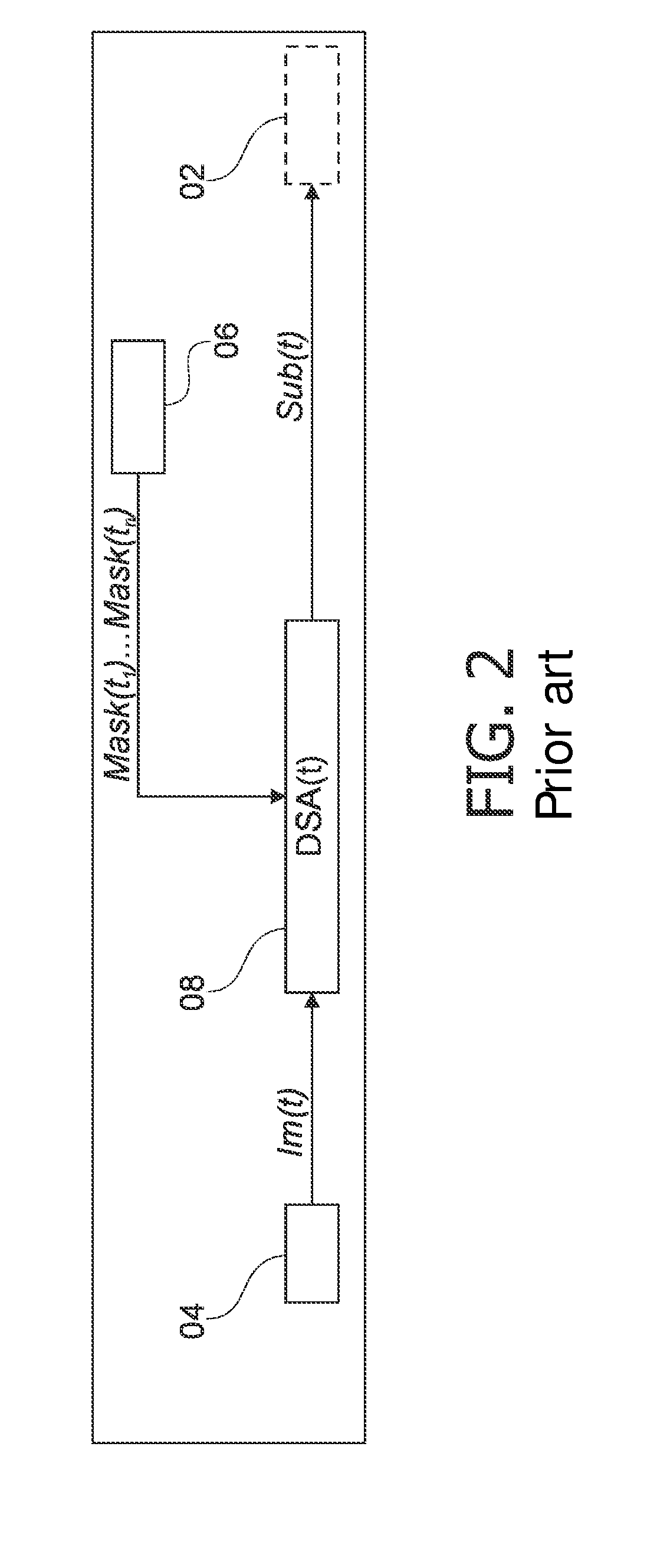Mask construction for cardiac subtraction
a mask and cardiac subtraction technology, applied in the field of perfusion procedures in digital subtraction angiography, can solve the problems of sensitivity to motion that could have occurred between the current injected frame and the corresponding mask frame, and the so-called residual motion due to heartbeat or respiration is a serious disadvantage of the techniqu
- Summary
- Abstract
- Description
- Claims
- Application Information
AI Technical Summary
Benefits of technology
Problems solved by technology
Method used
Image
Examples
Embodiment Construction
[0026]FIG. 1 schematically shows an X-ray imaging system 40. A source of X-ray radiation 42 is provided to generate X-ray radiation. A table 44 is provided to receive a subject to be examined. Further, an X-ray image detection module 46 is located opposite the source of X-ray radiation 42, i.e. during the radiation procedure, the subject is located between the source of X-ray radiation 42 and the detection module 46. The latter is sending data to a data processing unit 48, which is connected to both the detection module 46 and the radiation source 42. Furthermore a display 28 is arranged in the vicinity of the table 44 to display information to the person operating the X-ray imaging system, i.e. a clinician. Preferably the display 28 is movably mounted to allow for an individual adjustment depending on the examination situation. Also, an interface unit 52 is arranged to input information by the user. Basically, the image detection module 46 generates images by exposing the subject t...
PUM
 Login to View More
Login to View More Abstract
Description
Claims
Application Information
 Login to View More
Login to View More - R&D
- Intellectual Property
- Life Sciences
- Materials
- Tech Scout
- Unparalleled Data Quality
- Higher Quality Content
- 60% Fewer Hallucinations
Browse by: Latest US Patents, China's latest patents, Technical Efficacy Thesaurus, Application Domain, Technology Topic, Popular Technical Reports.
© 2025 PatSnap. All rights reserved.Legal|Privacy policy|Modern Slavery Act Transparency Statement|Sitemap|About US| Contact US: help@patsnap.com



